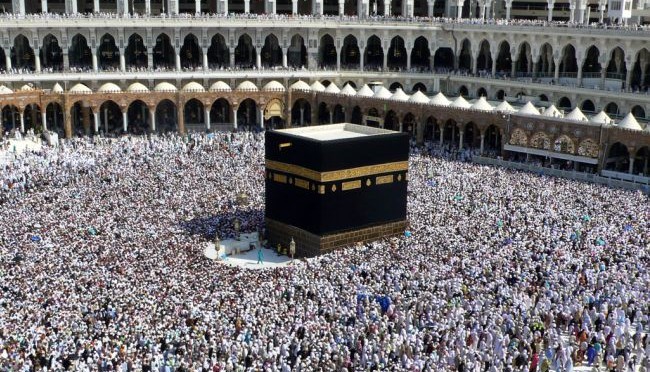By Farid Khavari, Ph.D.
If the Iran nuclear deal is ratified by the U.S. Congress and Senate, the first guaranteed casualty would be Saudi Arabia followed by all the Sheikdoms around the Persian Gulf and Jordan; Iraq, Syria, Lebanon, Palestine and Yemen belong already to Iran’s sphere of influence.
The Middle East and North Africa will not be the same in the future for two reasons: 1) Either the Shia-Mullah regime of Iran will live up to the agreement, and stop all or most of their efforts to pursue developing atomic bombs; or 2) they would defy the agreement and continue developing the bombs. In either case, Iran’s subversive and terroristic activities will continue until the end goal is reached by taking over Saudi Arabia and Mecca, controlling the entire Islamic world, their huge wealth and the proceeds from the pilgrimage; a dream of the Shiites and the Shia mullahs since Imam Ali was not recognized by the Sunnis as the first caliph, which split Muslims into Sunni and Shia sects ending up with Sunni’s dominance.
Saudis are not only being threatened by the Shia mullahs; ISIS/ISIL is just as serious of a threat to the existence of the Kings and Sheiks in the Middle East. Since ISIS/ISIL wants to take Islam back to the early days of Islam, and restore the reign of caliphate in the Middle East and North Africa, Kings and Sheiks have no place in that concept.
Some uninformed people may welcome the demise of the Kings and Sheiks in the Middle East for their lavish lifestyle and imposing the Sharia laws, but neither Shia-Mullahs nor ISIS/ISIL are a right replacement.
A bleak future can be seen not only in the repeat of events after the demise of the Shah of Iran in 1979 (mass execution, exodus of educated people, refugees, etc.), but also the escalation of war and killing in the Middle East and North Africa and drastic rise of radical Islam due to rising poverty and despair in those regions.
Further, devastating development could take place if Israel’s existence is seriously threatened by the Shia mullahs forcing them to make use of an atomic bomb in that region, which would definitely lead to the most predicted Armageddon.
The Middle East and North Africa have plenty of huge and different problems. However, Iran’s nuclear deal and its ratification would not put a single dent in reducing other problems of that troubled region, much less resolving it.
If the U.S. policy-makers and their advisors were well-informed and knowledgeable about all the factors and forces involved with regard to economics, politics, religion, social issues, oil, energy, environment, etc., all the efforts would be made to change the Shia-Mullah regime of Iran by supporting Iranians to do it themselves and with no U.S. military involvement; it would definitely be the first major step toward a right direction. Below are the facts:
A friendly regime in Iran means:
- Ending Iranian support for terrorism.
- Balance between Shias and Sunnis in the region.
- Ending the nuclear threat.
- Blocking the spread of radical Islam to Europe and the U.S.
- Recognition of Israel by the largest country in the Middle East, with friendly relations and trade.
- Ending Iran’s drive to dominate the region and the threat to Saudi Arabia.
- Neutralizing Russian influence in the region.
- Protecting the U.S. Dollar’s reserve currency status.
- A huge new market for U.S. business, civilian and military, hundreds of billions of dollars in new trade agreements.
- Secure, stable energy supplies for the world,
- Avoiding another protracted and expensive war in the Middle East.
